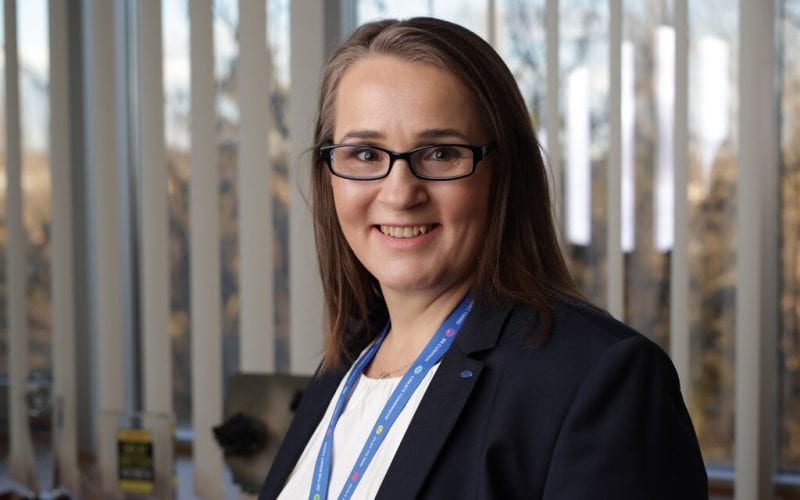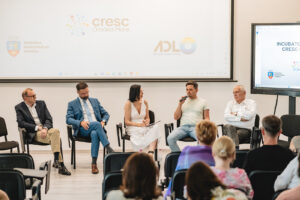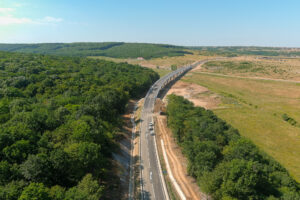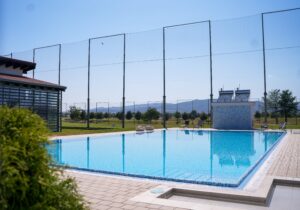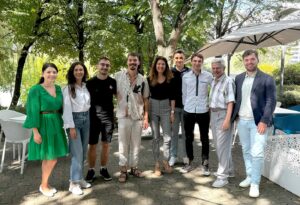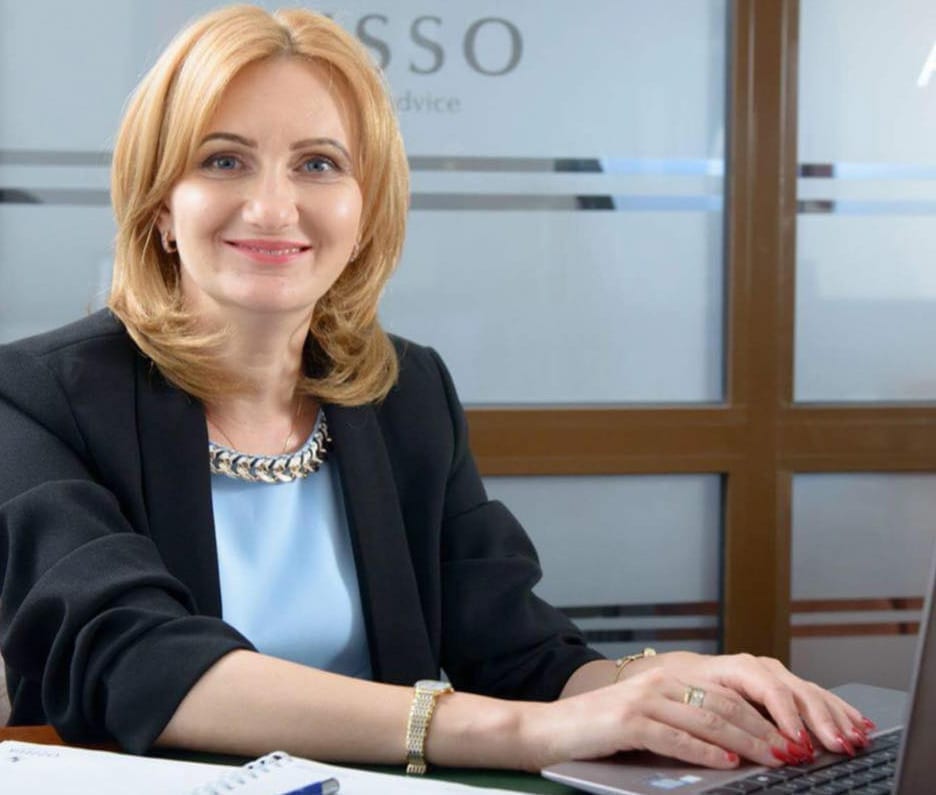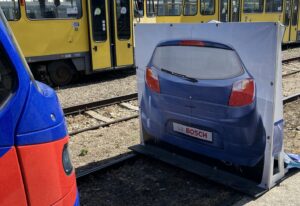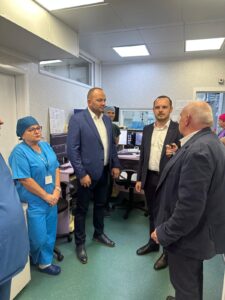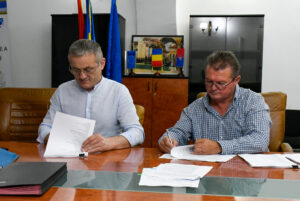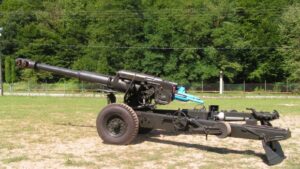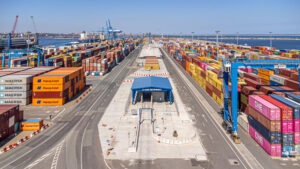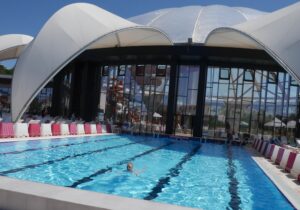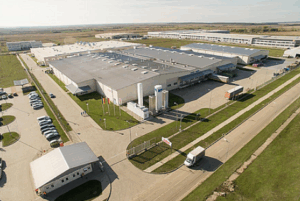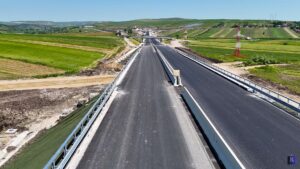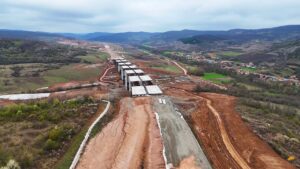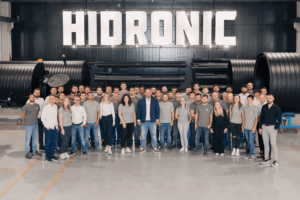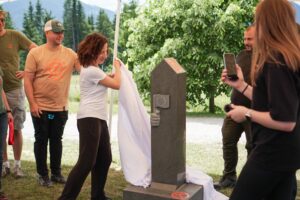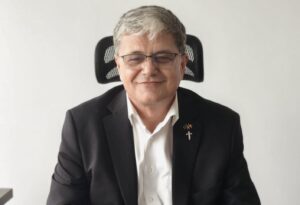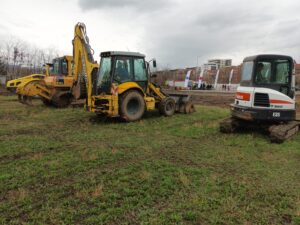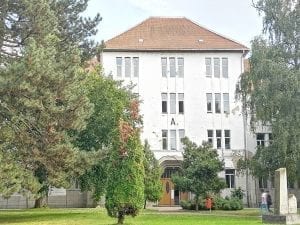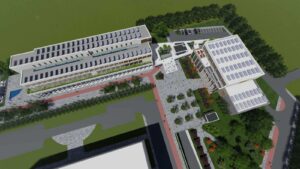“Ford Craiova will be producing a new light commercial vehicle from 2023, which from 2024 will be also produced in a full electric version. Ford announced a 300 mln USD investment at Craiova plant to support the production of this new vehicle”, says Josephine Payne, President – Ford Romania & CEO Ford Craiova, in an interview for our magazine.
The global car market is moving towards electric and smart cars. Ford Group has taken decisive steps in this direction. What infrastructure does the group develop in Romania given these coordinates?
Josephine Payne, President – Ford Romania & CEO Ford Craiova: Ford has committed to lead the electric vehicle and sustainable mobility revolution and nearly doubled, to $22 billion, what it will invest in developing EVs and create solutions by 2025.
In Romania, all our Ford locations are electrified ready- with charging stations installed in each dealership which covers the current needs arisen from the sales processes.
Ford announced last year the plan to introduce 1,000 charging stations at Ford facilities across Europe during the next three years to make charging simple and convenient for employees. Stuart Rowley, president, Ford of Europe, called on governments, industries and institutions to support the push for electrification with faster expansion of public charging infrastructures.
There have been numerous discussions related to the possibility for Ford Craiova to produce electric vehicles in the last year, can you provide more information about Ford’s strategy for the factory in Romania?
J.P.: We’ve just announced on April 27 that Ford Craiova will be producing a new light commercial vehicle from 2023, which from 2024 will be also produced in a full electric version. Ford announced a 300 mln USD investment at Craiova plant to support the production of this new vehicle. Ford Craiova operations have a strong record of delivering world-class competitiveness and flexibility. Our plan to build this new light commercial vehicle in Romania reflects our continuing positive partnership with local suppliers and the community, and the success of the entire Ford Craiova team.
Adding an all-electric version in 2024 means Craiova will be our third facility in Europe to build an all-electric vehicle. It follows recent investments this year in the Ford Cologne Electrified Vehicle Center in Germany and Ford Otosan’s Kocaeli plant in Turkey and sends another clear signal that we are on an accelerated path to providing our commercial vehicle customers with a zero emissions future in Europe.

What other projects are you preparing in this direction, whether be autonomous, connected, hydrogen cars etc.?
J.P.: Ford Craiova plant currently builds the very successful Puma model, along with EcoSport and the multi-awarded 1.0 l EcoBoost engines.
In addition to the newly announced light commercial vehicle that we’ll start producing here as of 2023, with a full electric version as of 2024, we don’t have any other product news to share at this point.
What horizontal impact does the transformation of the industry generate? How do component suppliers who need to adapt to the new wave in the automotive industry react?
J.P.: Ford currently works with around 40 Romanian-based suppliers and we will continue to adjust and adapt our supply base as needed to fit production demand and requirements.
How developed is your electric charging infrastructure from your point of view and what steps should be taken in this direction?
J.P.: Ford announced last year the plan to introduce 1,000 charging stations at Ford facilities across Europe during the next three years to make charging simple and convenient for employees. Stuart Rowley, president, Ford of Europe, called on governments, industries and institutions to support the push for electrification with faster expansion of public charging infrastructures.
What are the main HR-related challenges of the transformations? How about regarding the Romanian educational system, which must adapt to the new directions in the car industry?
J.P.: Ford Romania currently employs around 6,000 people who are working three shifts both in Vehicles and Engines Operations. Ford’s strategy has always been to adjust volumes and the workforce level to production needs and market demand. We do not have any news at this stage regarding potential new hires at Craiova plant.
We do believe in vocational schools’ system and here we are actively involved and support classes within the Technological Highschool in Craiova. As one of the most important employers in the region, we do feel a certain level of responsibility to prepare the future automotive engineers and I strongly believe that together with the local authorities we could create strong programs and encourage youngsters to embrace technical studies.
What are the main challenges in the field of transport infrastructure (mainly road and railway) and how does it affect your annual turnover and productivity?
J.P.: We have an ongoing dialogue with the Romanian Government, especially on two extremely important road projects for the automotive industry: the Craiova-Pitesti express road and the Sibiu-Pitesti highway. In 2020, there was progress on both projects, but we are still at the very beginning with some sections of the Sibiu-Pitesti highway still not awarded. Like many Romanians, we expect these projects will be completed on time. In addition to the road infrastructure required, an effective rail network is equally vital.
Logistically, we are currently facing significant delays transporting our vehicles via rail. The railway transport through Vama Curtici is now greatly impacted by the current rehabilitation works and the increased rail traffic. Thus, in the summer months, the average journey for our trains on the Craiova-Curtici route was approximately 21 hours; by October, this had increased to around 54 hours, with some trains taking over 100 hours to travel from Craiova to Curtici.
How does Ford Romania respond and adapt to the transport objectives in the European Green Deal that have a strong impact on the car industry?
J.P.: Ford shares ACEA’s position which is calling for the upcoming review of the CO2 Regulation for passenger cars and vans to be based on strict EU-wide infrastructure deployment objectives – set as part of the revision of the Alternative Fuels Infrastructure law (AFID). Concretely, this means that there should be a link between the CO2 target on the one hand, and binding and enforceable national targets for charging points and refueling stations on the other. In addition, EU member states should implement a legal framework for the rapid rollout of private charging infrastructure at home and in workplaces.
At least three million public charging points for cars will be needed to meet the 2030 CO2 target of -37.5% agreed in 2019. Today there are only some 225,000 in operation in the EU. ACEA’s full position paper on the review of the CO2 regulation for cars and vans can be found here.
REZUMAT
Josephine Payne, Președinte Ford România și Director General al fabricii Ford Craiova, susține, în interviul pe care ni l-a acordat, că “Ford s-a angajat să conducă revoluția vehiculelor electrice și a mobilității durabile”, iar până în 2025 investiția în dezvoltarea vehiculelor electrice și crearea de soluții se va dubla, până la 22 miliarde dolari.
Ford investește 300 de milioane de dolari pentru a produce un nou vehicul comercial ușor la fabrica din Craiova, începând cu 2023. Versiunea complet electrică va debuta în 2024. Acesta va fi primul vehicul de volum, complet electric construit de Ford în România, în linie cu angajamentul companiei de a atinge zero emisii în Europa. Fabrica din Craiova urmează astfel Centrului de Vehicule Electrificate Ford din Köln (Germania) și uzinei Ford Otosan din Kocaeli (Turcia), care vor produce vehicule complet electrice.
By Ligia VORO & Nicolae POP (Transilvania Business, nr. 102, mai-iunie 2021)




